Encontre
Faça os movimentos certos para identificar os melhores criadores para sua marca
Envolva-se
Faça campanhas, gerencie criadores e acompanhe os resultados que se relacionam com você
Blog e artigos
Seu recurso definitivo para a economia do criador
Metodologia e classificações
Sobre o Favikon, classificações, ferramentas e muito mais.
Percepções
A receita por trás dos rankings virais e cobiçados da Favikon.
Ferramentas gratuitas para potencializar seus fluxos de trabalho de marketing de influenciadores.
Veja as histórias de sucesso dos usuários do Favikon.
Tenha acesso a todos os rankings da Favikon.
Torne-se um parceiro
Torne-se um afiliado
Sobre a equipe por trás do Favikon
O lugar para conversar economia do criador, juntos


Classificações em destaque

Here is the Top 50 Rising Video Creators on LinkedIn. Video is quickly becoming the platform’s most powerful format, with creators gaining more reach and engagement than ever. As Gen Z grows its presence and tools like BrandLink and Thought Leader Ads support content creation, LinkedIn is doubling down on video. This ranking, made in partnership with OpusClip, celebrates the creators leading this shift and aims to inspire anyone ready to start sharing through video.

Here is the Top 50 Rising Video Creators on LinkedIn. Video is quickly becoming the platform’s most powerful format, with creators gaining more reach and engagement than ever. As Gen Z grows its presence and tools like BrandLink and Thought Leader Ads support content creation, LinkedIn is doubling down on video. This ranking, made in partnership with OpusClip, celebrates the creators leading this shift and aims to inspire anyone ready to start sharing through video.
A estratégia B2B do LinkedIn impulsiona 50% do pipeline para um ARR SaaS de 8 milhões de dólares
Descubra como uma empresa de SaaS em rápido crescimento criou uma estratégia no LinkedIn que agora impulsiona metade de seu funil de vendas. Esse detalhamento revela táticas práticas que qualquer equipe B2B pode usar para aumentar a visibilidade e a receita.
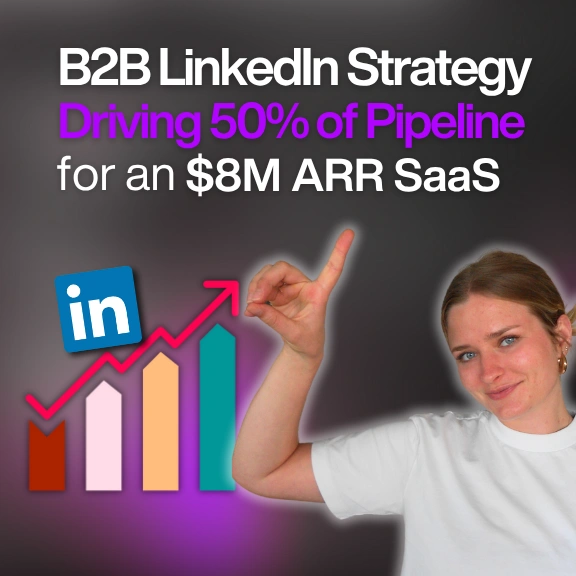


Megan Mahoney is an influencer marketer who uses data and real-world case studies to uncover what actually drives results in influencer campaigns. With a background in content marketing and over a decade of experience helping brands grow through strategy and storytelling, she brings a thoughtful perspective to creator partnerships and is deeply engaged in the evolving creator economy.
Check Brand DealsA estratégia B2B do LinkedIn impulsiona 50% do pipeline para um ARR SaaS de 8 milhões de dólares
A Storylane é uma empresa B2B SaaS que vende software de demonstração, e o vice-presidente de marketing, Madhav Bhandari, afirmou que mais de 50% de seu pipeline vem do LinkedIn:
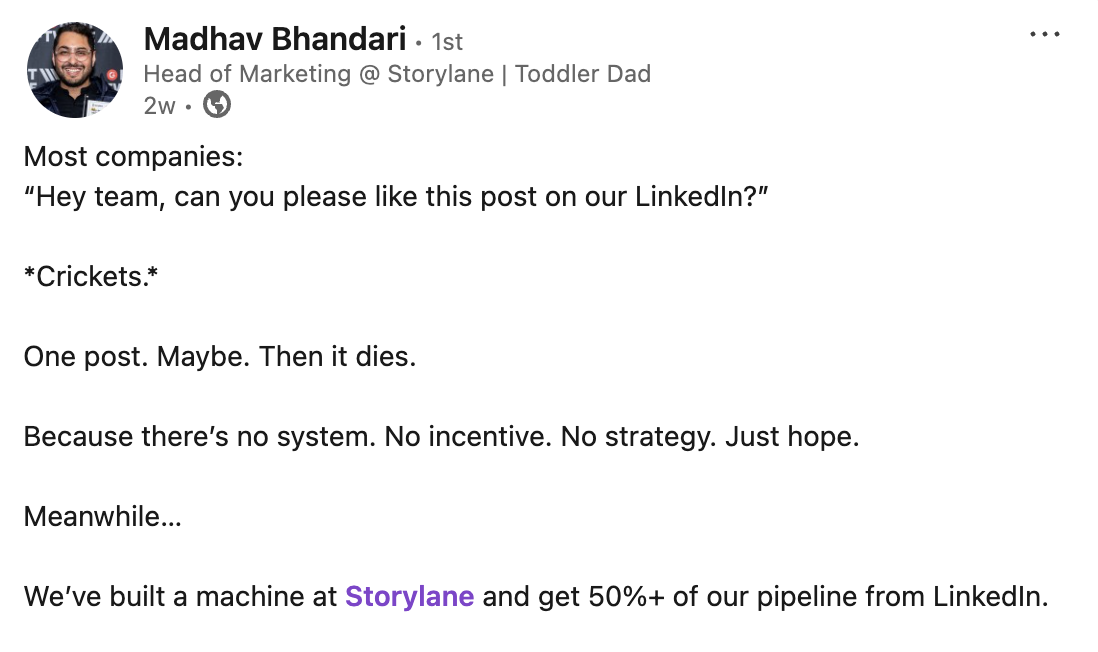
Apesar de seguir os conselhos típicos de melhores práticas de marketing do LinkedIn (ou seja, “publique mais conteúdo de qualidade e peça aos funcionários que se envolvam”), a maioria dos gerentes de mídia social B2B geralmente enfrenta dois problemas:
- Baixo engajamento na página da empresa: O algoritmo naturalmente dá menos alcance às páginas da empresa. E as pessoas interagem com pessoas, não com marcas. Portanto, a maioria dos conteúdos de marca nunca decola.
- Fraca participação dos funcionários: A maioria das empresas pede que seus funcionários compartilhem e se envolvam nas mídias sociais, mas muitos funcionários não se sentem à vontade para participar das mídias sociais ou consideram isso uma prioridade menor do que seus outros trabalhos.
Neste post, analisaremos como a Storylane enfrentou e superou esses desafios para criar uma estratégia de marketing no LinkedIn que impulsiona a maior parte de sua receita.
Abordagem mais ampla da Storylane ao marketing do LinkedIn
Muitos profissionais de marketing de mídia social B2B estabelecem uma meta para aumentar o perfil de sua marca no LinkedIn.
No entanto, os perfis de marca do LinkedIn geralmente recebem menos alcance do que os perfis pessoais.
E as pessoas gostam de interagir com outras pessoas, não com marcas sem rosto.
Na verdade, pesquisei o perfil da empresa Storylane em Favikon e suas métricas de engajamento não são notáveis.
Aqui estão algumas estatísticas:
- Seguidores: 19.200 (página geral da empresa média a abaixo da média)
- Engajamento médio: 60 (médio a abaixo da média da página geral da empresa)
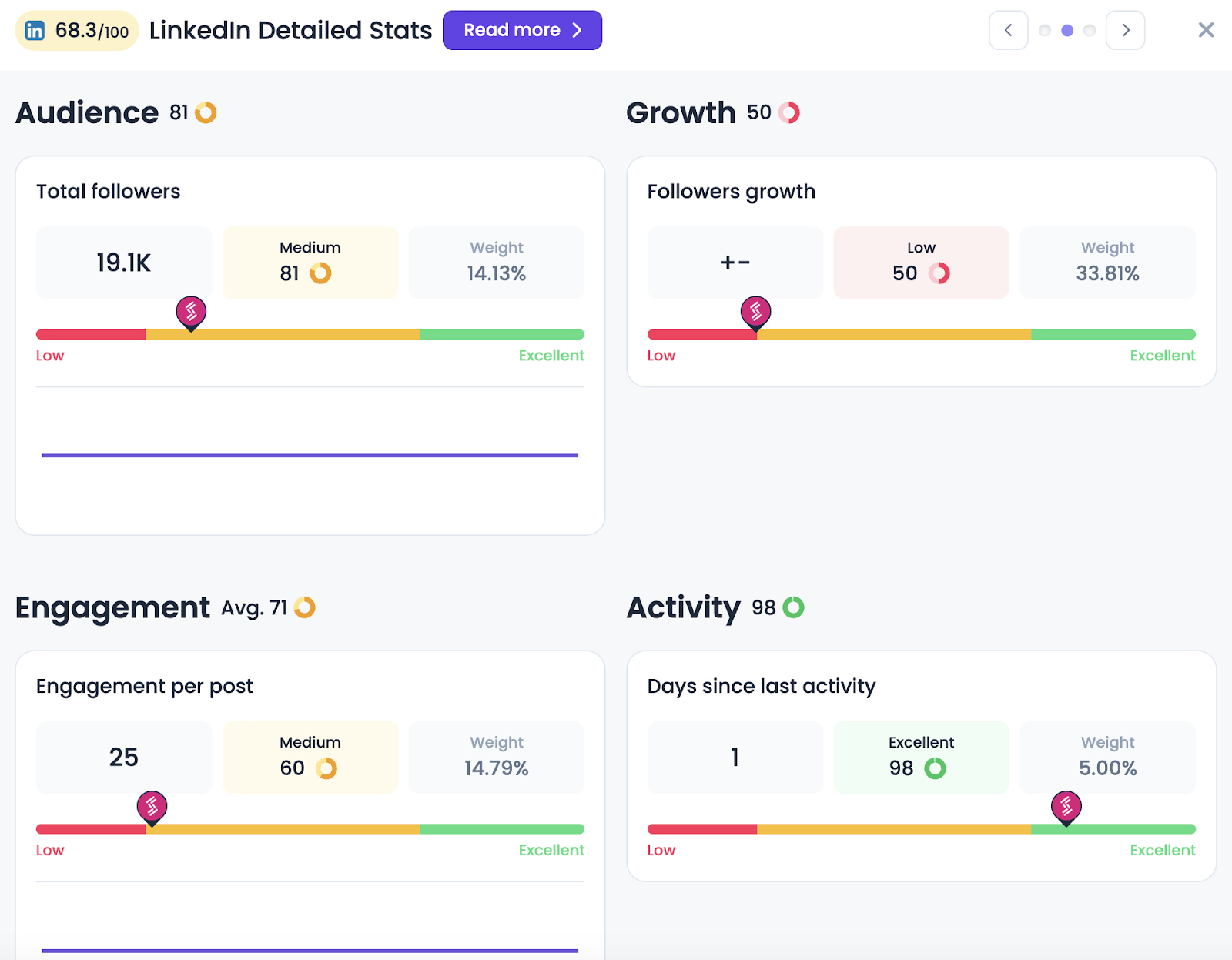
No entanto, essas estatísticas são mais um reflexo da percepção da equipe da Storylane de que a página da empresa no LinkedIn é uma das oportunidades de menor alavancagem.
Em vez disso, eles tomaram a sábia decisão de investir em pessoas individuais para promover a marca no LinkedIn.
Aqui estão os três pontos da estratégia de marketing da Storylane no LinkedIn:
- Funcionários: Executivos e funcionários dos departamentos de marketing, vendas e CS
- Criadores: Especialistas do setor com públicos engajados no LinkedIn
- Clientes: Por meio de concursos como o DemoDundies, os clientes são incentivados a compartilhar suas demonstrações feitas com o Storylane
Analisamos todo o engajamento gerado pelas postagens do LinkedIn que marcaram Storylane, e aqui está uma visão geral da divisão do engajamento:
(Observação: o conteúdo liderado pelo cliente não foi incluído nesse cálculo, pois os clientes não necessariamente marcaram o Storylane. Em vez disso, eles costumavam marcar hashtags específicas usadas, como #demodundies.)

Neste post, detalharemos como a Storylane navegou em cada um desses três pilares e compartilharemos algumas dicas que sua equipe mencionou em podcasts e postagens no LinkedIn.
Etapa 1: Defesa dos funcionários do LinkedIn
A defesa dos funcionários é uma estratégia de crescimento que incentiva os funcionários a publicar conteúdo em nome da empresa em seu próprio perfil ou a interagir com o conteúdo da empresa ou de outros funcionários.
Vice-presidente de marketing da Storylane, Madhav Bhandari, compartilhado no podcast da Ahrefs que a defesa dos funcionários é a estratégia de crescimento do LinkedIn que Madhav recomenda que as marcas implementem primeiro lugar.
“Se você quer crescer no LinkedIn, precisa começar com os membros da sua equipe”, afirmou Bhandari.
“Todo mundo sabe que os perfis das empresas não têm muito alcance. Os perfis pessoais têm muito mais alcance. Então, você precisa aproveitar isso para conseguir dar aquela faísca inicial à sua marca.”
Para dar uma visão geral do sucesso do programa de defesa de funcionários, aqui estão algumas estatísticas que reuni em Favikon:
- 17 funcionários ativos (de um total de aproximadamente 50 funcionários)
- 566 postagens desses 17 funcionários
- 46.700 engajamentos totais
- 3,6 milhões de visualizações cumulativas
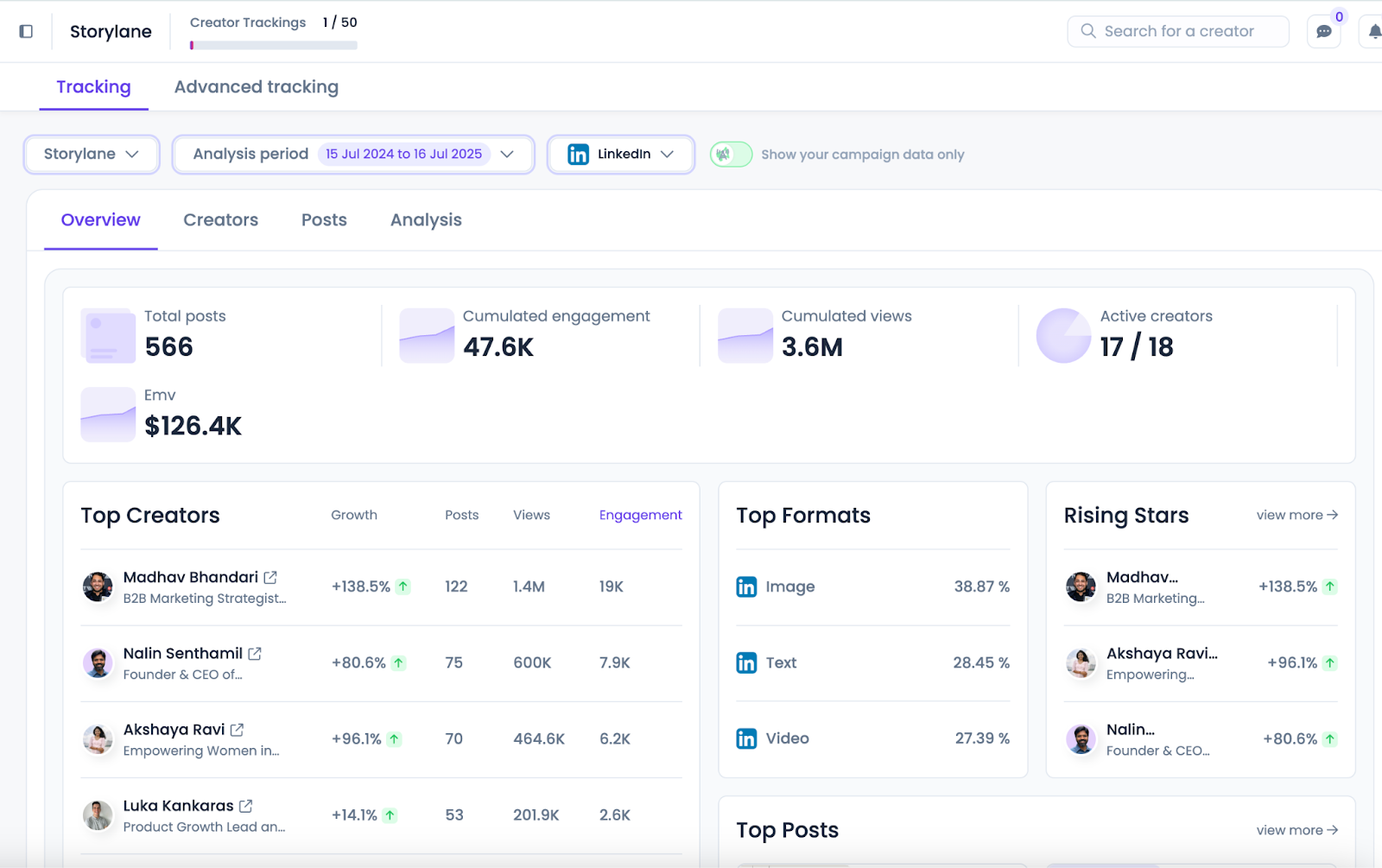
Olhando na guia “Análise” no Favikon, você pode ver que o número total de postagens de funcionários (junto com o engajamento) cresceu significativamente no ano passado:
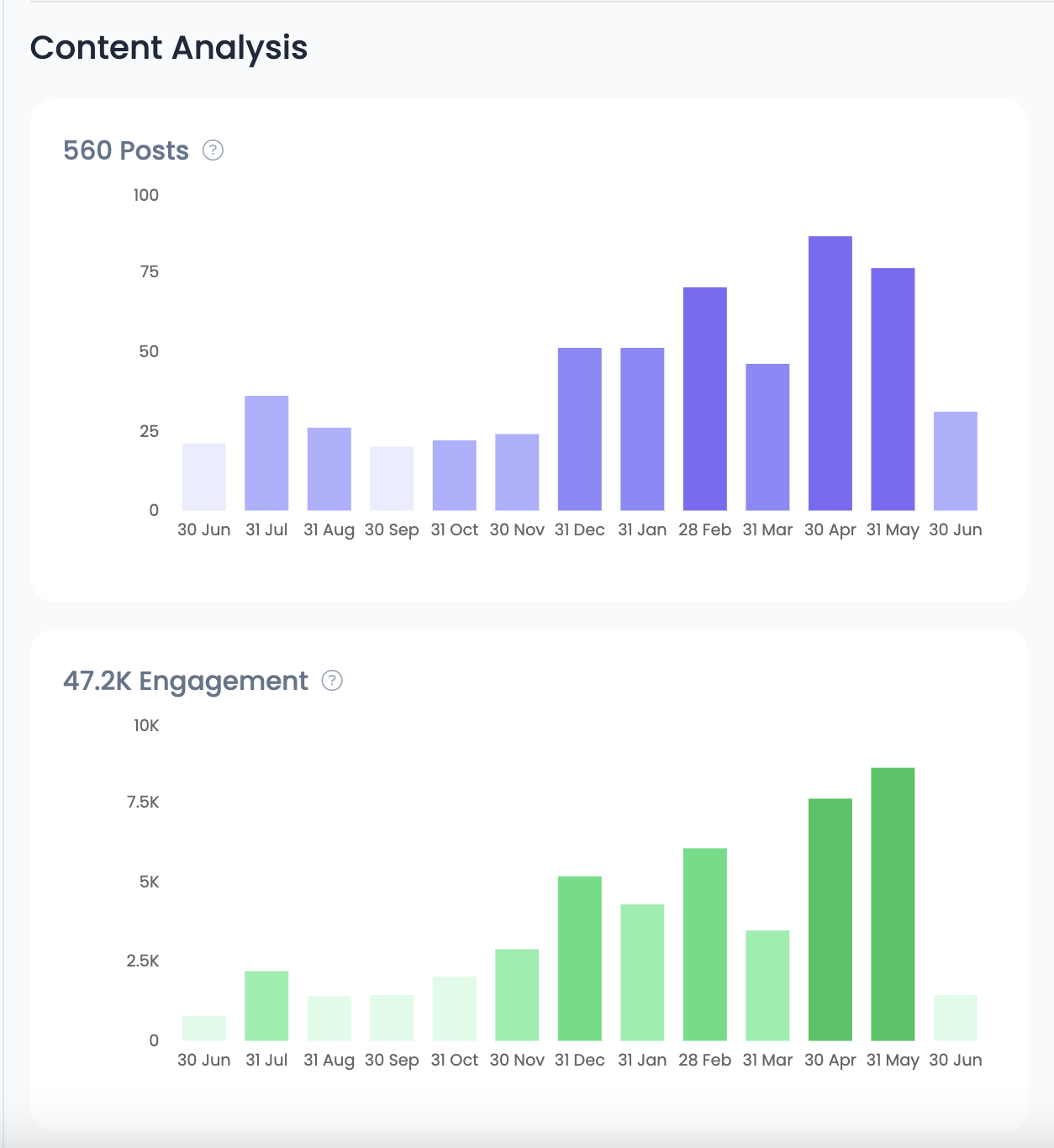
Embora esses gráficos ilustrem apenas o total de postagens dos funcionários (não necessariamente postagens que envolvam promoção da empresa), essa é uma métrica útil para rastrear porque seus funcionários está a amplificação da sua marca.
À medida que o número de seguidores de seus funcionários cresce, as oportunidades de distribuição de sua marca também crescem.
Obviamente, alguns funcionários podem sair com o tempo. Porém, se você criar uma cultura que valorize a defesa dos funcionários, o ROI líquido geral dos esforços de defesa dos funcionários ainda deve ser positivo.
Se você está criando um programa de defesa de funcionários, as três perguntas mais importantes são:
- Quem: Quais funcionários você deve incluir em seu programa de defesa de funcionários?
- Como: Como você incentiva e incentiva os funcionários a participarem de forma consistente?
- O que: Quais foram os tipos de postagens que tiveram um bom desempenho para que você possa dar aos funcionários algumas diretrizes sobre o que publicar?
Vamos detalhar como a Storylane abordou cada uma dessas questões abaixo.




Quem: Quais funcionários foram incluídos no programa de defesa de funcionários da Storylane?
Muitas empresas de SaaS tentam incluir todos os funcionários no programa de advocacia.
No entanto, como o CMO Madhav Bhandari apontou no podcast da Ahrefs, muitos funcionários estão relutantes em publicar no LinkedIn.
“Algumas pessoas simplesmente não entendem de mídias sociais. Algumas pessoas não querem compartilhar. Algumas pessoas estão muito ocupadas com seu trabalho.”
Então, quais funcionários você deve envolver em seu programa de defesa de funcionários?
A abordagem de Bhandari é começar com:
- Liderança: Garanta que os principais executivos de marketing e vendas estejam participando.
- Aqueles que já estão ativos no LinkedIn: Alguns membros da equipe provavelmente terão muitos seguidores no LinkedIn. No caso da Storylane, havia de 5 a 6 funcionários “influenciadores” que eles imediatamente incluíram no programa de advocacia.
Aqui está o que Bhandari declarou em um Postagem no LinkedIn:

Depois de envolver a liderança e os atuais influenciadores da empresa, Bhandari recomenda focar nas seguintes equipes principais para participar da defesa dos funcionários:
- Marketing
- Vendas
- Suporte ao cliente
No podcast da Ahrefs, o apresentador e CMO, Tim Soulo, levantou uma objeção comum que muitos líderes de marketing provavelmente consideram:
“Vale mesmo a pena ter seu representante júnior de suporte ao cliente envolvido no programa de defesa de funcionários?”
O contra-argumento de Bhandari é que eles querem que o Storylane apareça em todos os lugares no feed de um cliente potencial.
Na verdade, o total de impressões e o engajamento das postagens dos funcionários nem mesmo são a principal métrica que Bhandari usa para medir a eficácia de seu programa de defesa de funcionários.
Em vez disso, ele se concentra em manter o Storylane no topo dos feeds dos principais tomadores de decisão.
Portanto, o objetivo é, eventualmente, envolver todos os funcionários que tenham pontos de contato diretos com clientes e clientes potenciais no programa de defesa de funcionários.
Então, um representante júnior de suporte ao cliente?
Eles podem ter um ponto de contato com um cliente existente e se conectar com ele no LinkedIn.
Portanto, essa pessoa deve estar envolvida no programa de defesa de funcionários da Storylane.
Aqui está uma recapitulação da abordagem de Bhandari para criar um programa de defesa de funcionários:
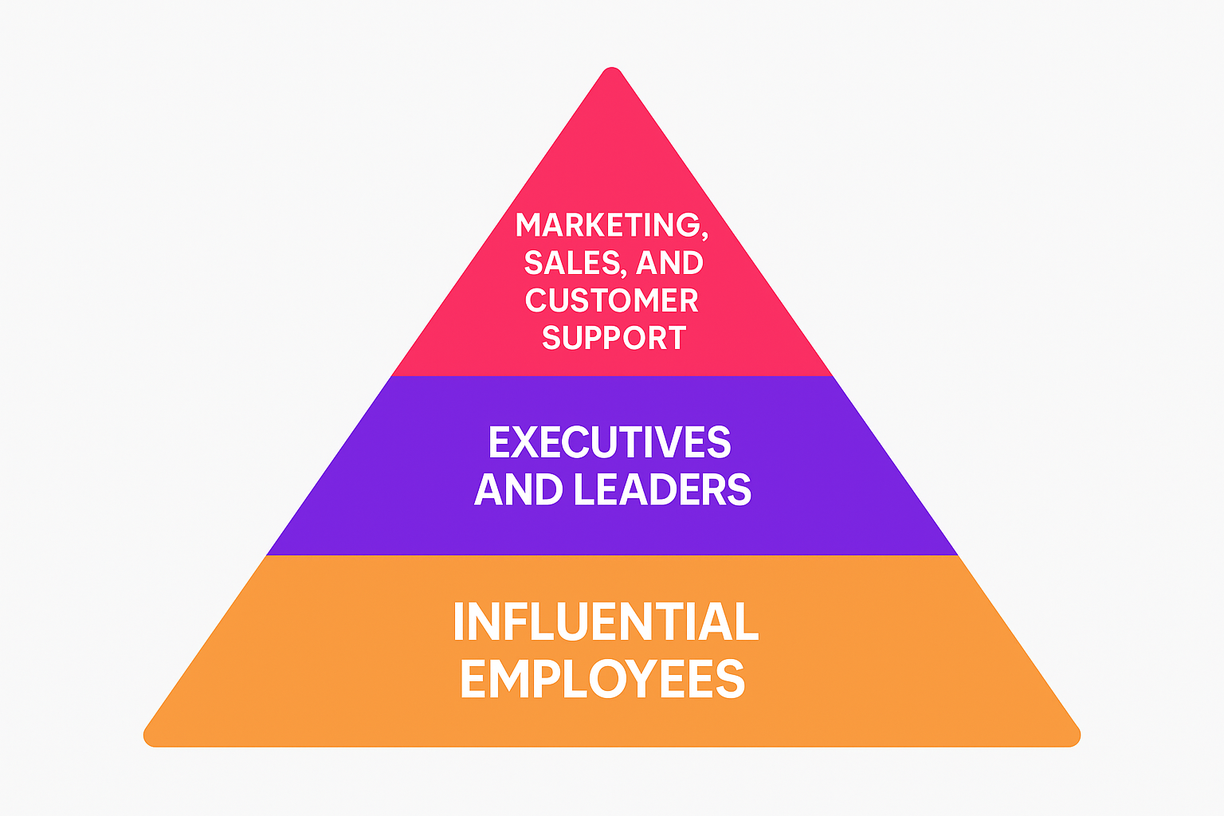
Como: Como você incentiva e incentiva os funcionários a participarem de forma consistente?
Os quatro pilares principais que a Storylane usa para manter os funcionários engajados de forma consistente são:
- Reforço positivo
- Suporte da equipe para escrever fantasmas
- Conteúdo divertido
- Gamificação
Reforço positivo
Implorar aos funcionários que se envolvam ou fazer com que se sintam culpados não gera engajamento.
Em vez disso, Bhandari acredita no reforço positivo.
Em vez de incomodar os funcionários, ele inicia todas as reuniões gerais agradecendo a participação no LinkedIn, mesmo que a participação seja mínima.
Ele também encerra cada reunião geral com “engajar, engajar, engajar”.
Essa abordagem, combinada com a participação ativa da liderança, criou uma cultura “em primeiro lugar no LinkedIn” que ajudou seu programa de defesa de funcionários a decolar.
Suporte da equipe para escrever fantasmas
E por falar em liderança, você pode descobrir que nem todo líder se sente à vontade para postar no LinkedIn. Portanto, considere dedicar recursos à equipe para ajudá-los a criar conteúdo envolvente.
Bhandari mencionou que eles têm uma pessoa que escreve ativamente para outros membros da equipe:

Conteúdo divertido
Outro motivo pelo qual os funcionários interagem com o conteúdo do Storylane é que ele é divertido.
Por exemplo, os funcionários ficaram felizes em compartilhar as postagens do Demo Dundies porque é um conceito criativo e divertido.
Então, compartilhar isso com o público não parecia uma tarefa árdua.
Gamificação
Por fim, eles também têm um canal no Slack com 25 pessoas e uma tabela de classificação que mostra os funcionários mais ativos. A gamificação do processo, recompensando os funcionários mais engajados, também impulsionou o engajamento na defesa dos funcionários.
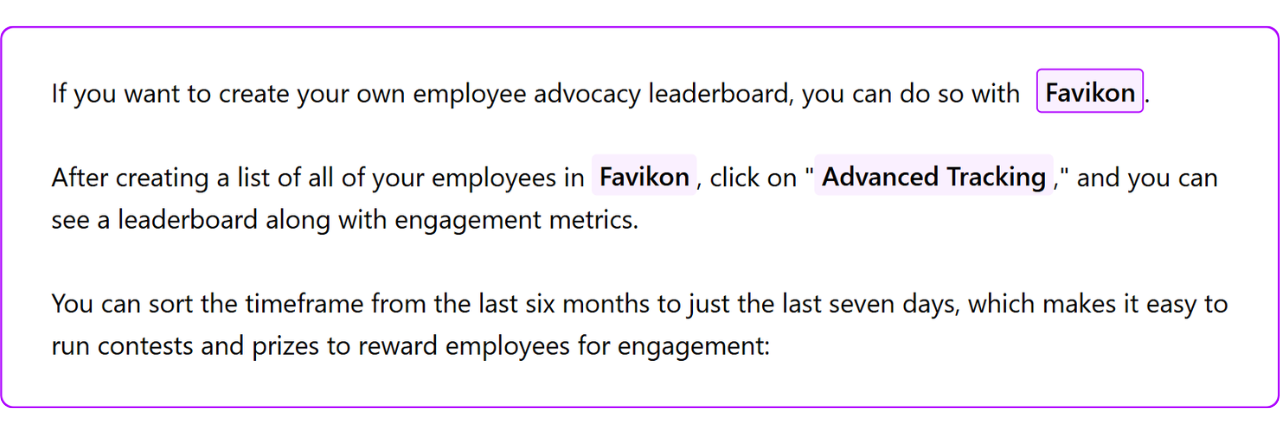
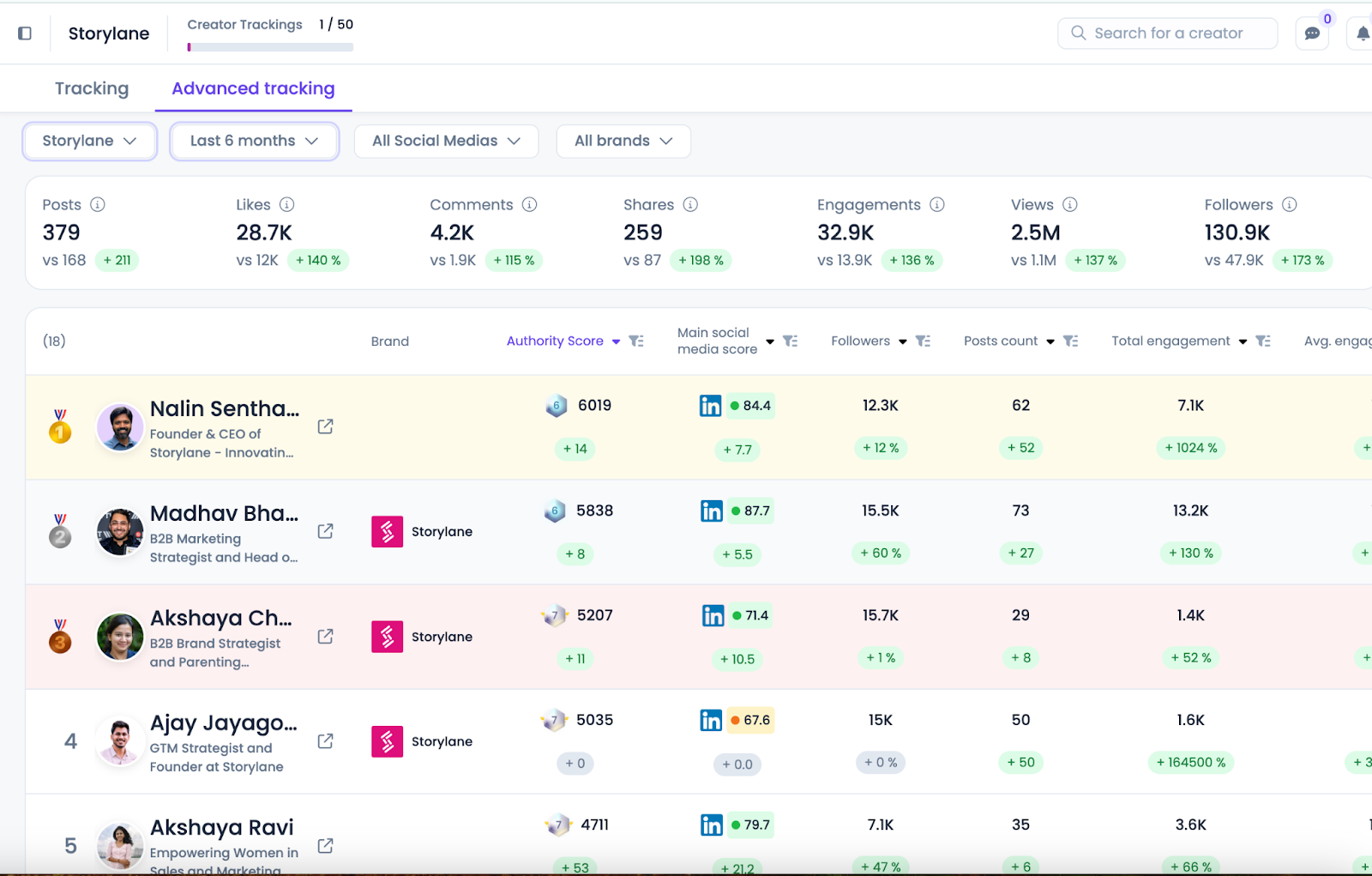
Para recapitular, aqui estão os principais pilares do incentivo à participação dos funcionários:
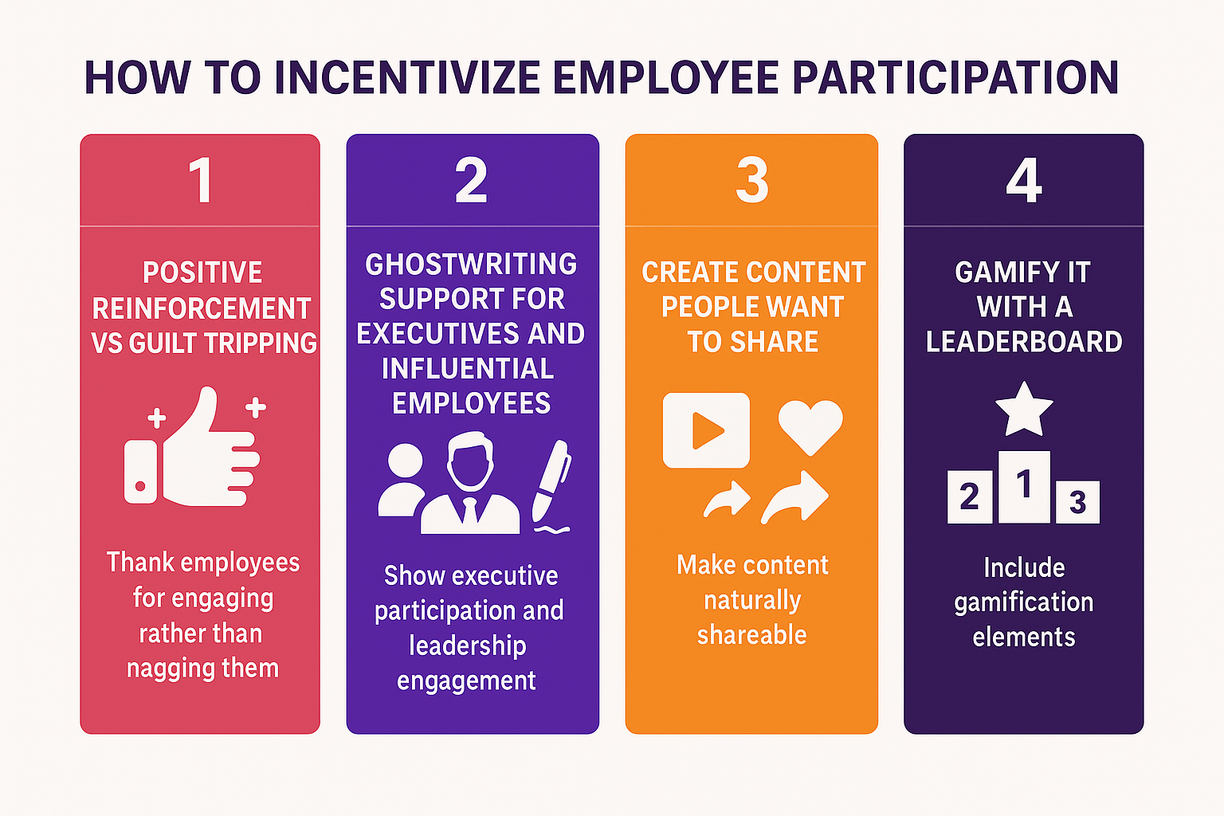
O que: O que os funcionários devem publicar?
Bhandari mencionou no podcast da Ahrefs que ocasionalmente pedem aos funcionários que promovam o lançamento de novos recursos ou iniciativas da empresa.
No entanto, seus funcionários não criarão uma audiência se promoverem apenas iniciativas da empresa.
Isso significa que os funcionários precisam publicar conteúdo interessante de forma consistente e criar seu próprio público para que seu programa de defesa de funcionários funcione.
Isso levanta duas questões:
- Como podemos garantir que os funcionários publiquem consistentemente conteúdo não promocional que tenha um bom desempenho e conquiste seguidores?
- Que tipo de conteúdo tem um bom desempenho no LinkedIn e ganha seguidores?
Começando com a primeira pergunta, a Storylane teve a sorte de ter alguns funcionários experientes no LinkedIn que não precisaram de ajuda com a criação de tópicos.
Por outro lado, outros funcionários não sabiam o que publicar ou como escrever uma publicação eficaz.
Para enfrentar esse desafio, a Storylane adotou uma abordagem 80/20 e se concentrou em ajudar os executivos (em vez de todos os funcionários).
Hoje, eles têm um único membro da equipe que discute ideias de tópicos e depois escuta gravações de chamadas para escrever postagens no LinkedIn.
Esse processo garante que as postagens sejam autênticas para o executivo, ao mesmo tempo em que mantém um cronograma de publicação consistente e garante que a redação seja bem otimizada para o LinkedIn.
Agora, vamos abordar a segunda pergunta: que tipo de conteúdo tem um bom desempenho no LinkedIn e ganha seguidores?
Para responder a essa pergunta, analisamos todas as postagens de funcionários com melhor desempenho da Storylane. Aqui está um detalhamento deles em todas as categorias:










.png)
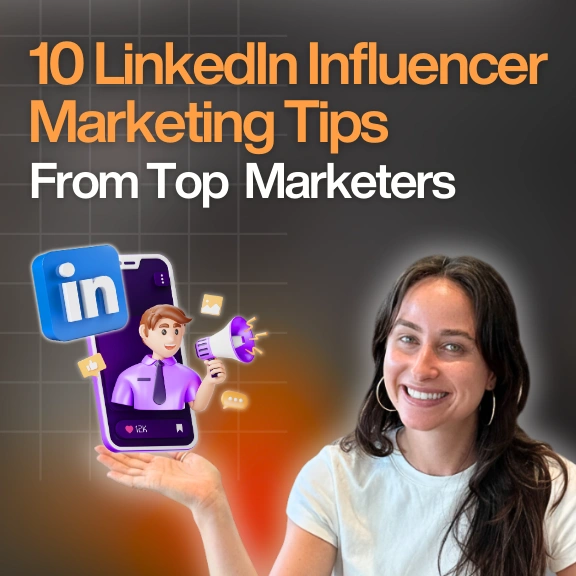





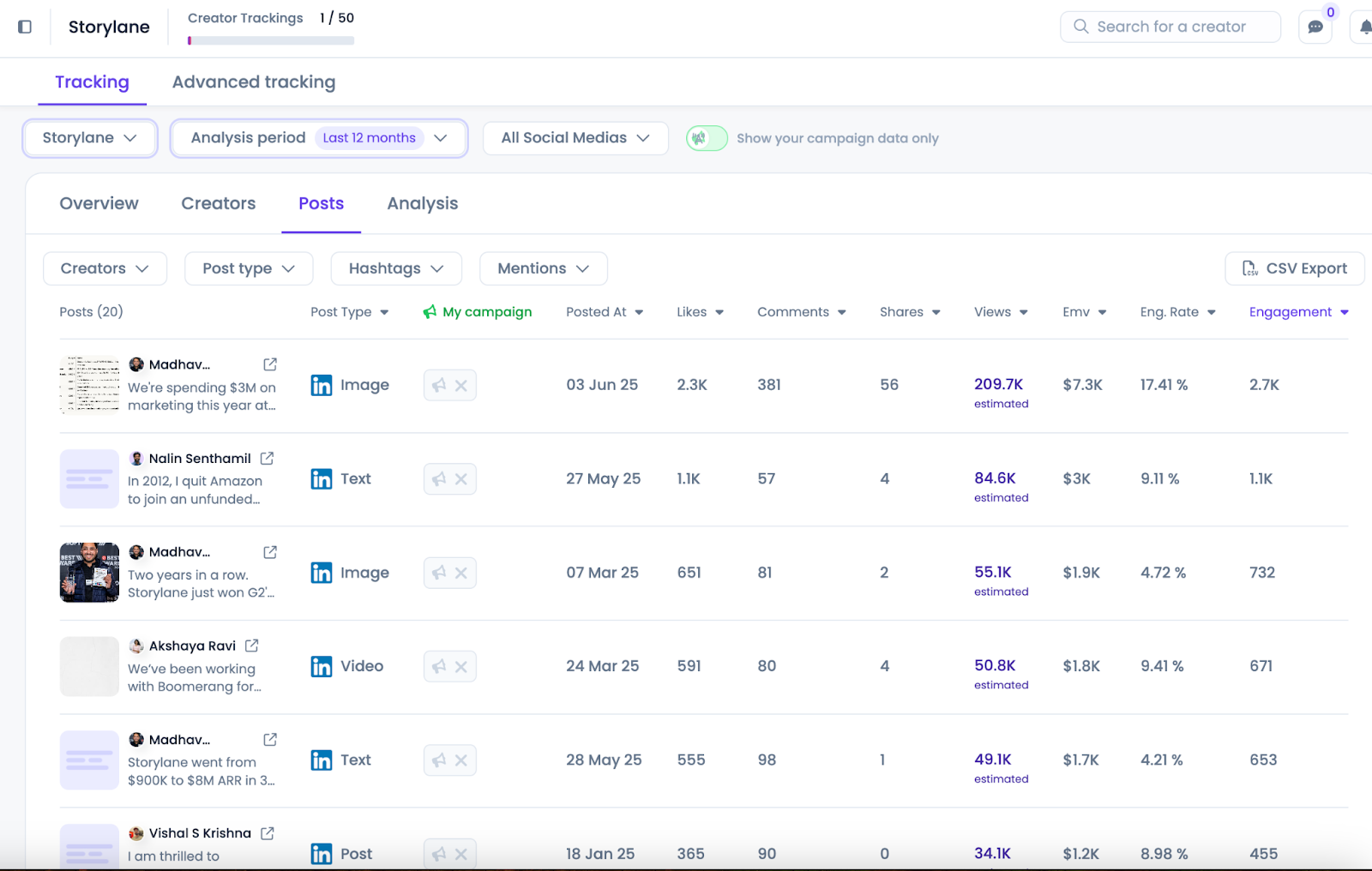
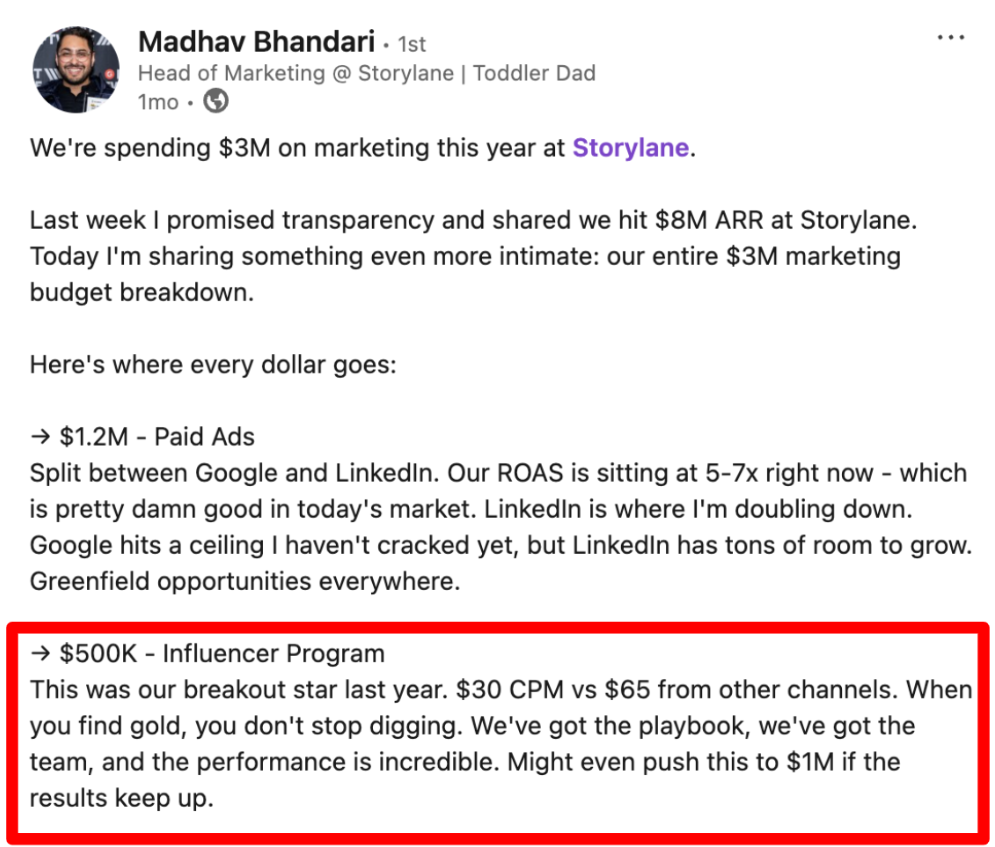



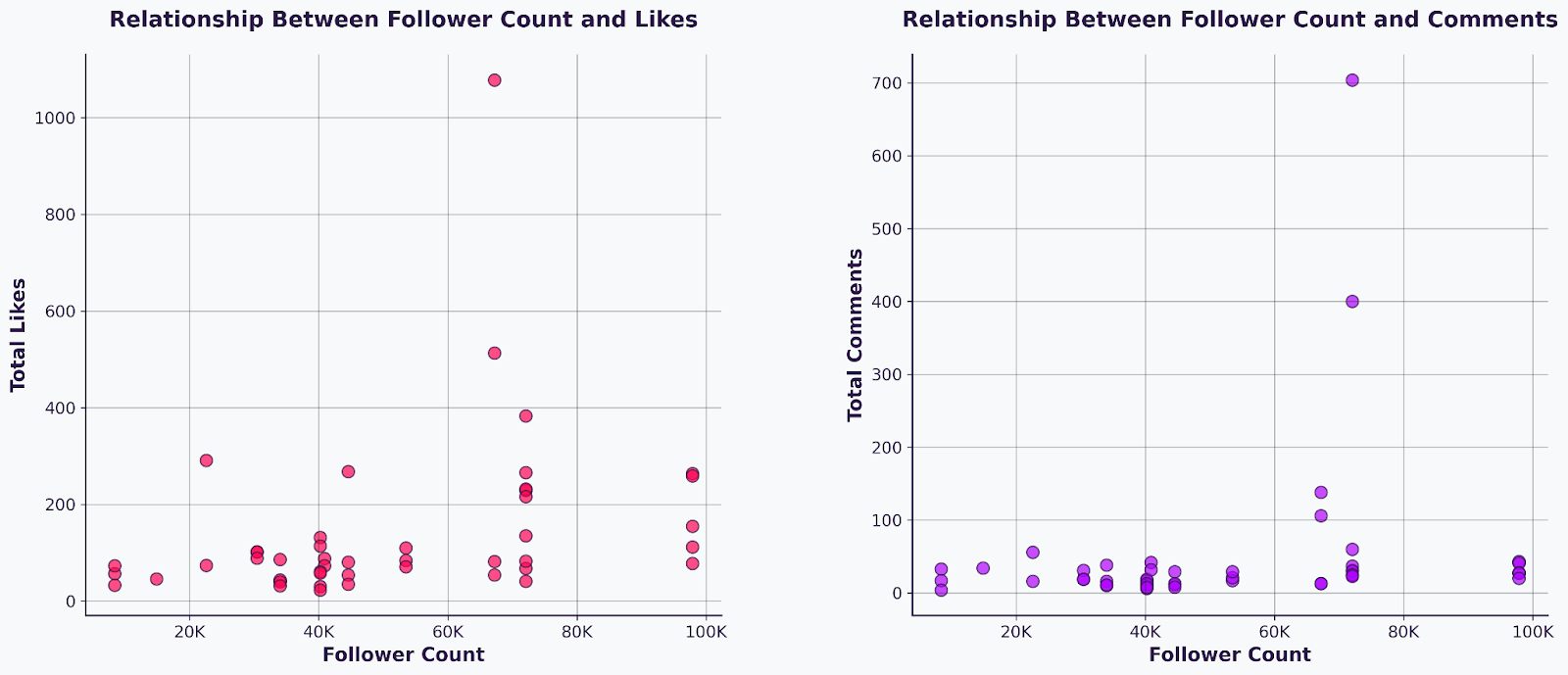
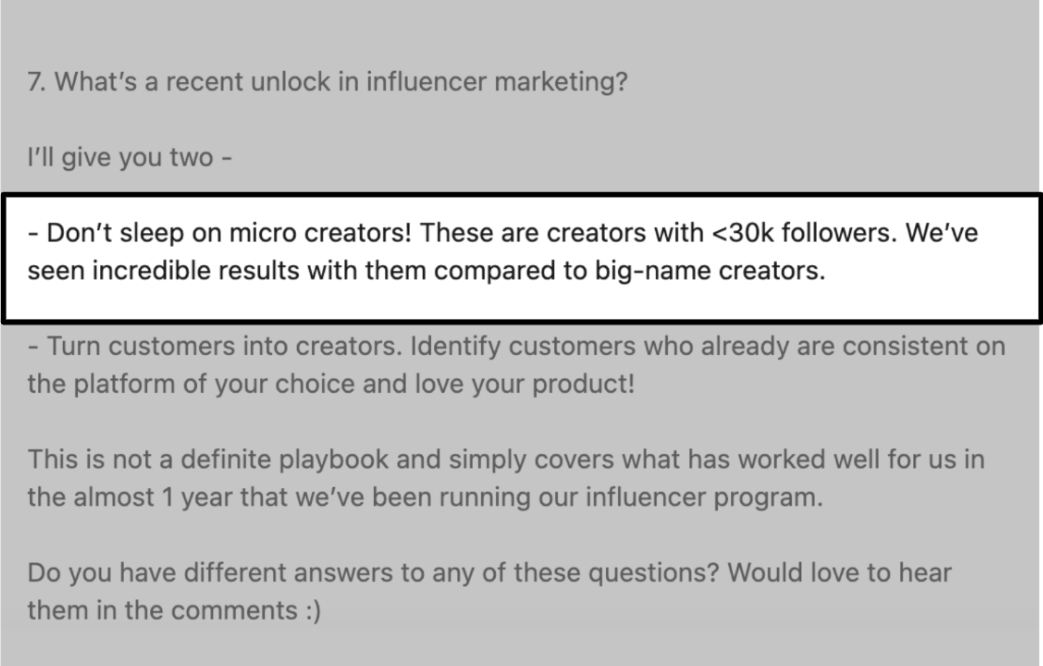
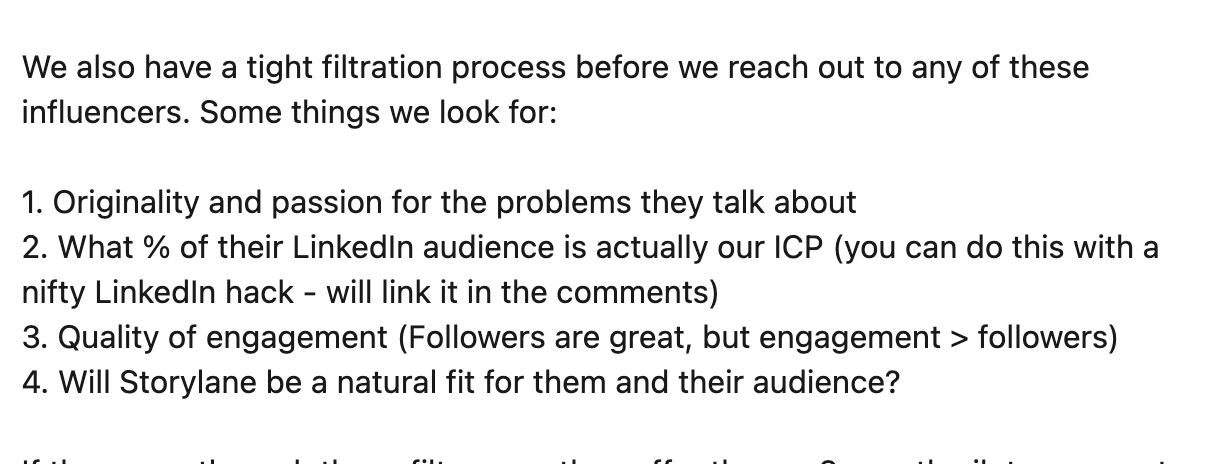
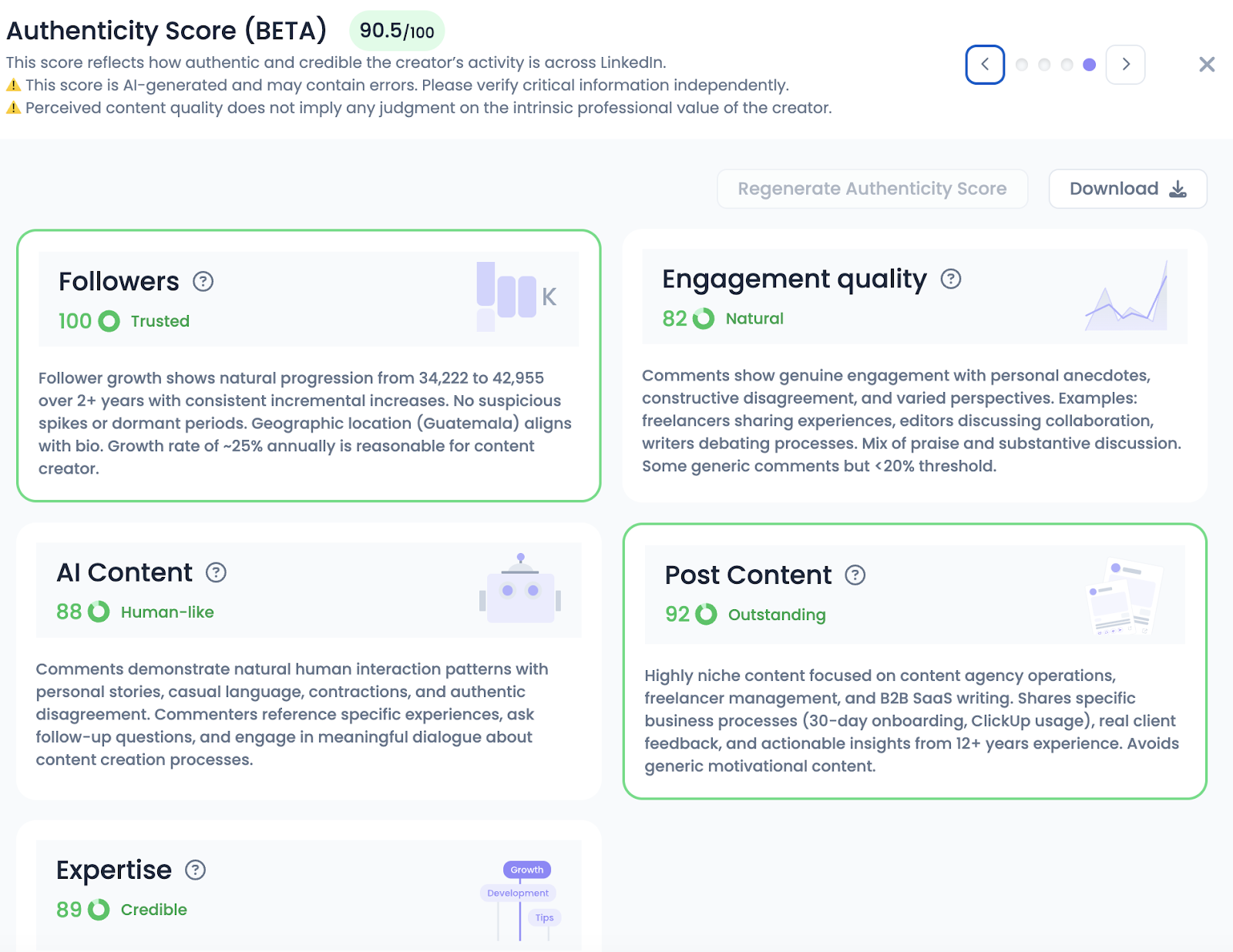

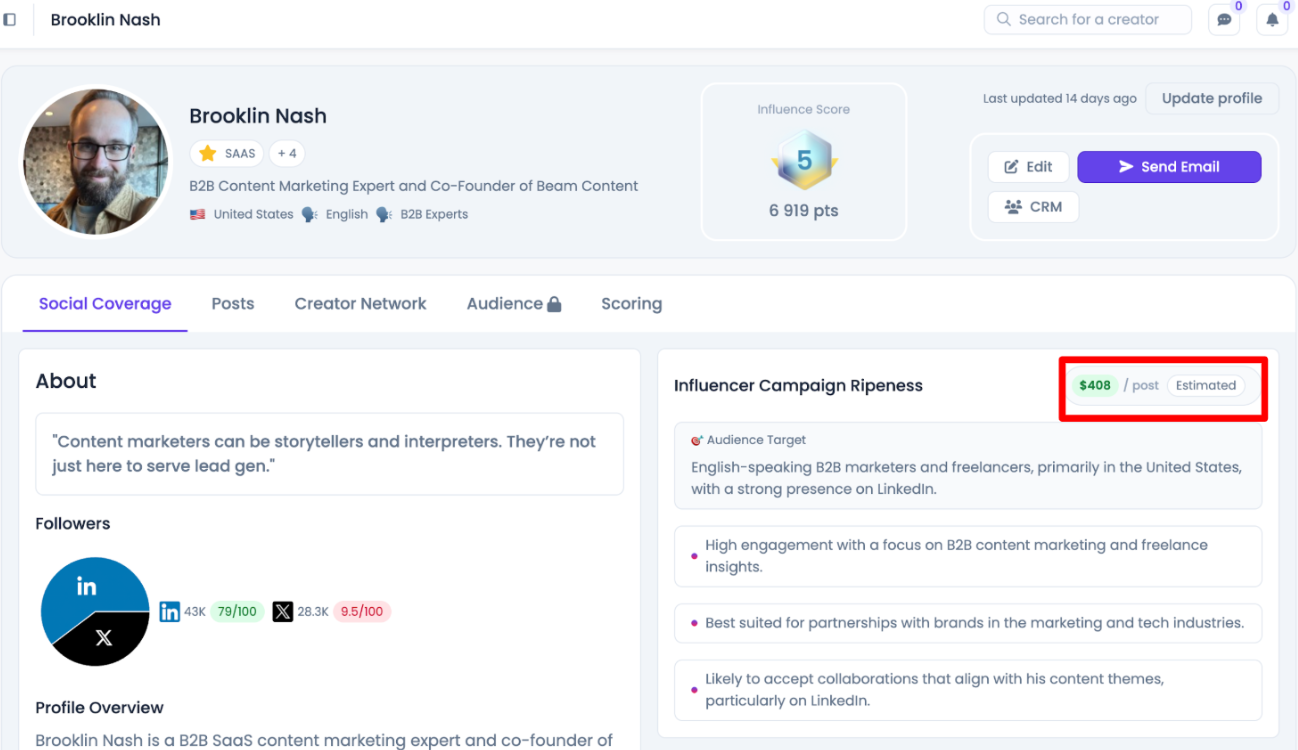
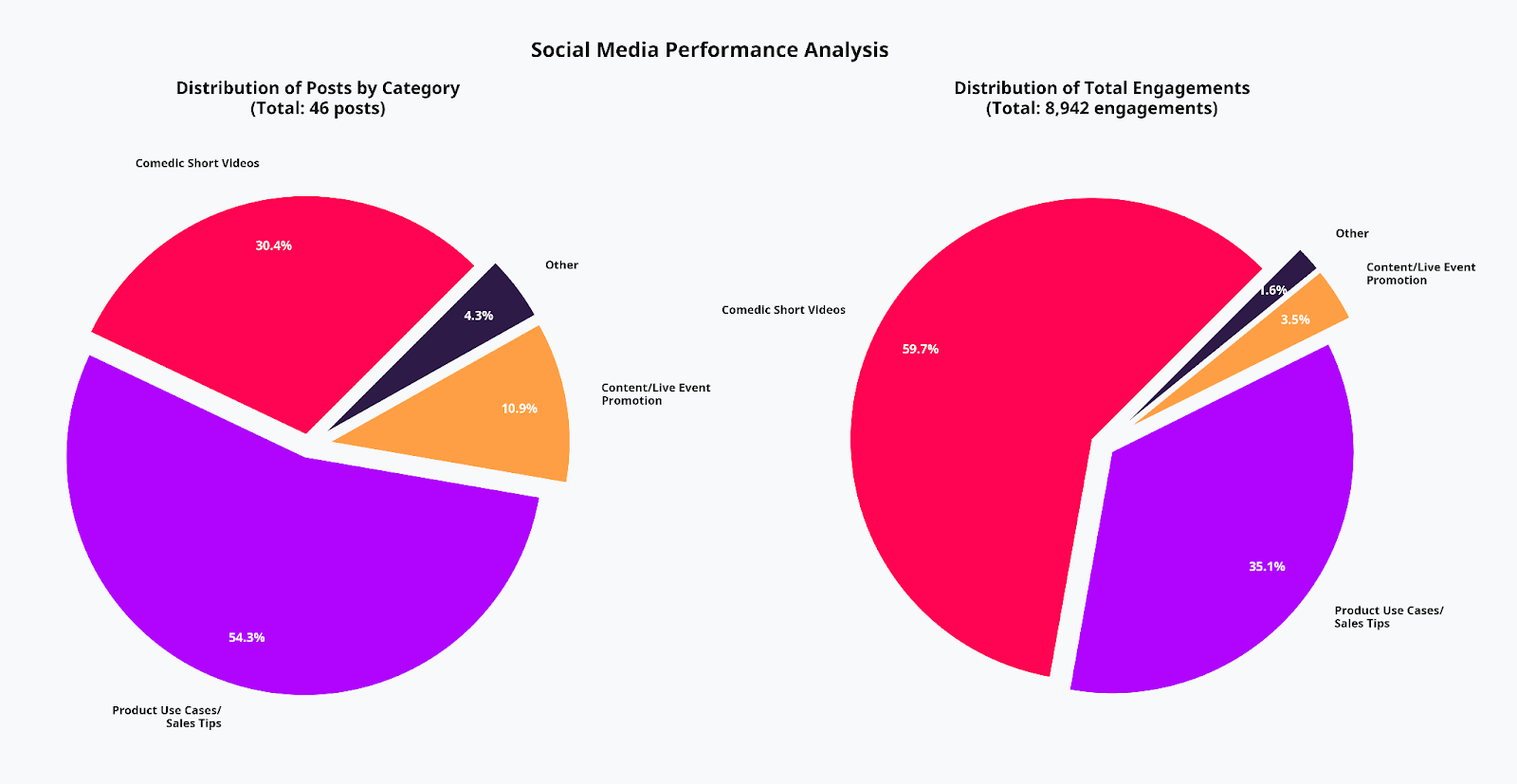
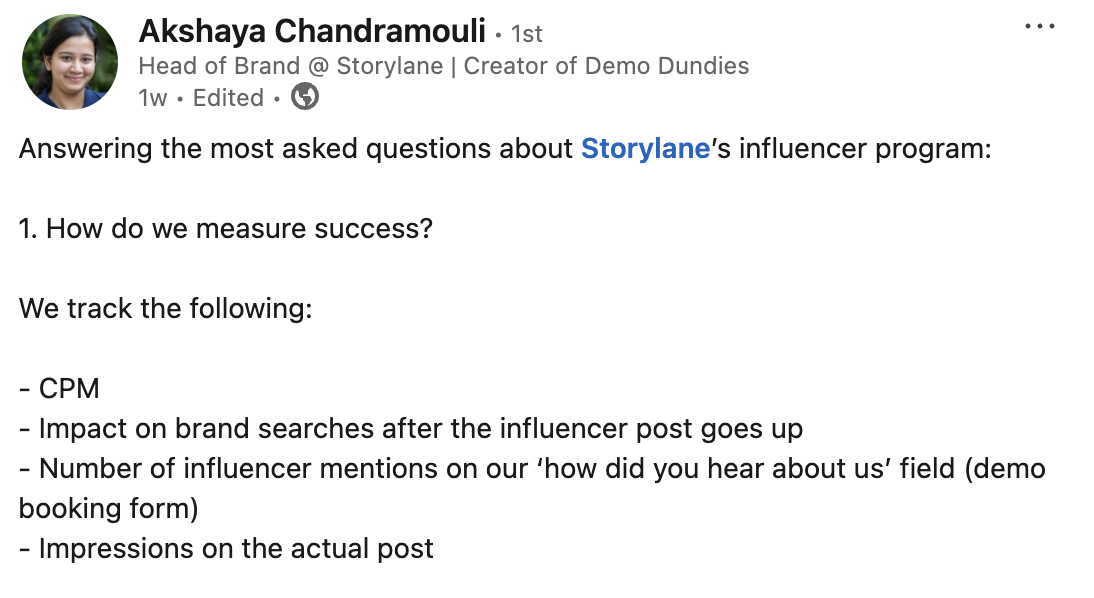
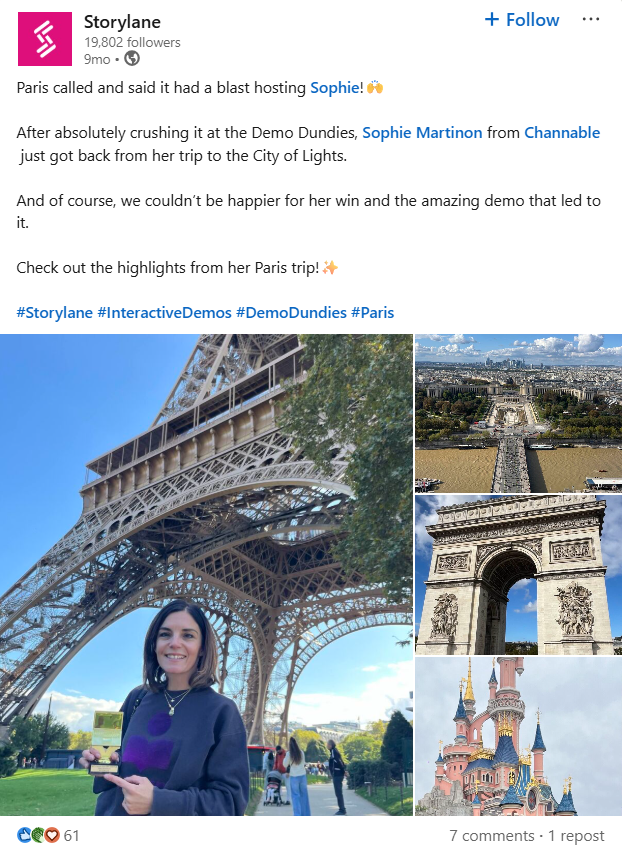
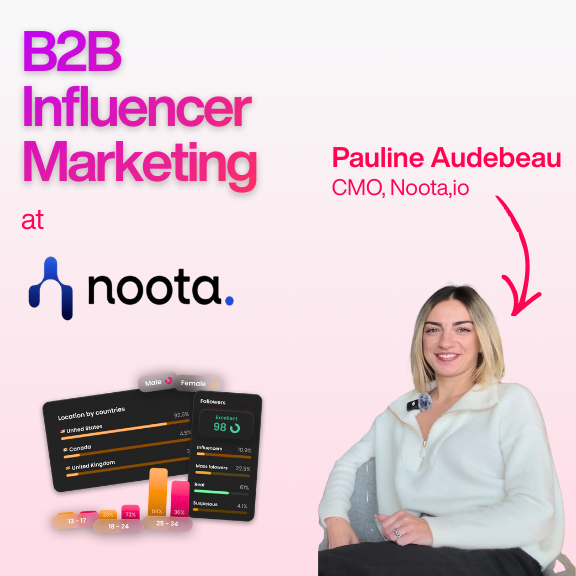


.png)
.png)

